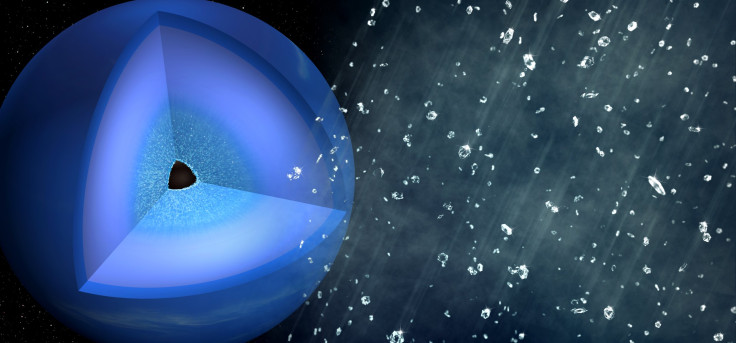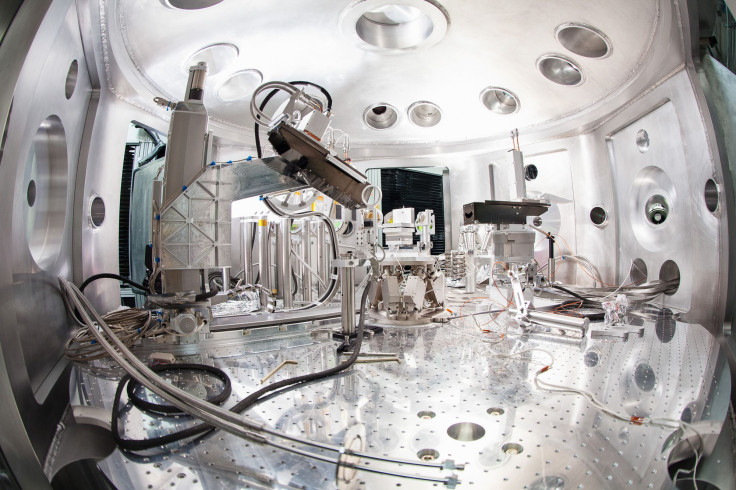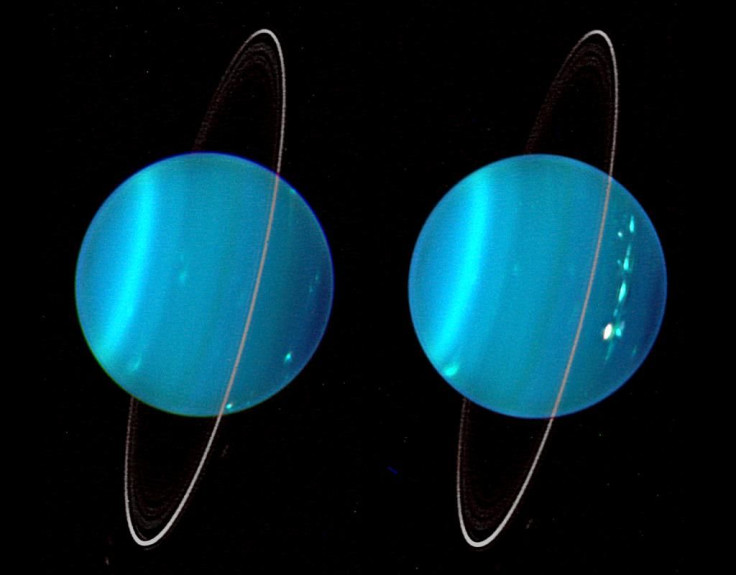Inside Uranus, Enormous Diamonds Rain Through To Planet's Core
Earth may be nice and comfortable, but in Uranus, it is raining diamonds -- if that helps you choose which planet you like better.
A group of scientists made this dazzling discovery when they mimicked the conditions of ice giants in their laboratory, subjecting hydrogen and carbon atoms to the extreme heat and pressure you would find inside them. It’s information that will help us understand the ice giants, which include Uranus and Neptune in our own solar system as well as some exoplanets that astronomers have discovered as they searched the universe for other worlds.
During their experiment, described in the journal Nature, the scientists used a powerful laser to send shockwaves through plastic and observed the atoms within the material forming diamond structures. At the time of their transformation, the atoms were experiencing temperatures of about 6,000 degrees Kelvin — equal to more than 10,000 degrees Fahrenheit — and a pressure of 150 gigapascals, which is almost 1.5 million times the amount air pressure the average person would feel just sitting in their living room.
Plastic may not immediately sound like it would be a good analog for the interior of a planet, but it’s what inside the material that counts.

“However they started is not important,” study co-author Nicholas Hartley, from the German research lab Helmholtz Zentrum Dresden-Rossendorf, told International Business Times.
We have various applications for plastic that have nothing to do with astronomy or fine jewelry. But the scientists were after the carbon and hydrogen atoms with the plastic, because inside an ice giant is a dense, slushy mantle where the “ice” is made up of hydrogen molecules attached to various elements.
Based on the fact that they saw the carbon and hydrogen separate and briefly form diamonds from carbon under these laboratory conditions, Hartley said, “We are fairly confident in saying it would also form diamonds on these planets.”
However, they would be substantially larger. The laboratory experiment was on a much smaller scale than a planet and created nanodiamonds, but the real thing could make much larger ones, maybe weighing millions of carats, according to the SLAC National Accelerator Laboratory, one of the institutions that worked on the project.
Those diamonds on places like Uranus and Neptune would be sinking through the slush, moving farther and farther inside. That’s where the “diamond rain” part comes in — it’s not falling from clouds onto a planet’s surface but “it is still precipitating out of this mixture,” Hartley said.

And perhaps it could be better compared to another form of precipitation, a snowball, because “it will keep on growing as it falls through the planet.”
Outside the rocky core at the center of the ice giant will likely be a sea of diamond.
“Previously, researchers could only assume that the diamonds had formed,” lead study author Dominik Kraus from HZDR said in a statement from the SLAC. “When I saw the results of this latest experiment, it was one of the best moments of my scientific career.”
The diamonds are more than just nice to look at. According to the study, the findings will help astronomers understand how the ice giants of our own solar system, Uranus and Neptune, formed and evolved as well as the relationships between mass and radius on mysterious, faraway exoplanets that contain carbon, which will make their classifications more accurate.
“With planets, the relationship between mass and radius can tell scientists quite a bit about the chemistry,” Kraus said. “And the chemistry that happens in the interior can provide additional information about some of the defining features of the planet.”


The nanodiamonds reach beyond astronomy, however. Hartley said his team would like to “retrieve them” when they are created within their experiments. Nanodiamonds are used in various other fields. Those include medicine, where, for example, they are used to carry medicine into cancer patients because the disease cells cannot easily fight off nanodiamonds.
“Currently, nanodiamonds are commercially produced from explosives; laser production may offer a cleaner and more easily controlled method,” the SLAC said.
The scientists are looking to do more experiments that will reveal the interiors of other types of planets.
“You can’t get inside planets like this” in a physical sense, Hartley said, so it’s interesting that “you can sort of relate these experiments that last a billionth of a second to planets that last billions of years.”
© Copyright IBTimes 2024. All rights reserved.



















